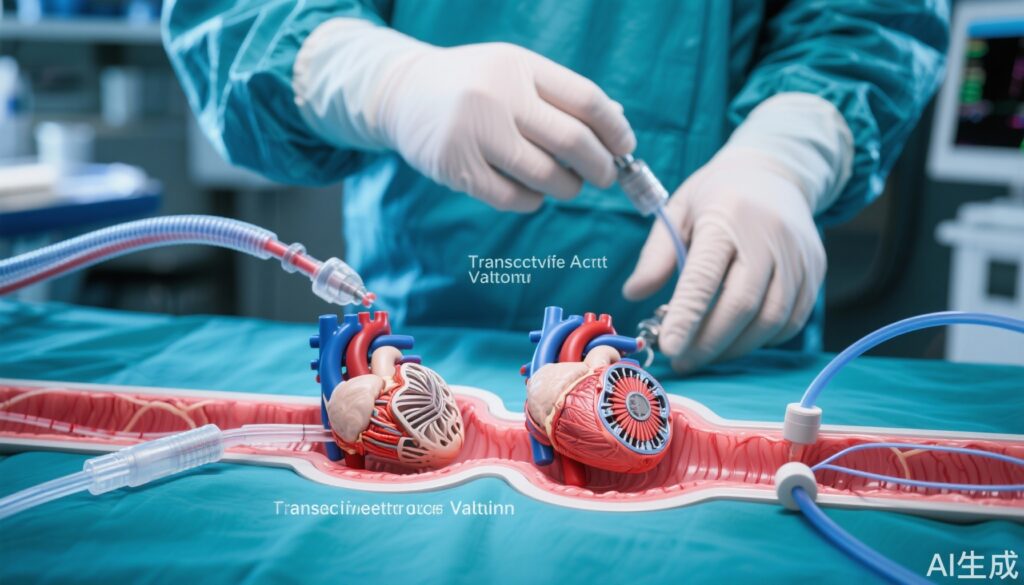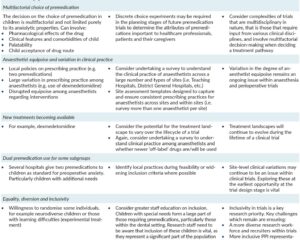Highlight
– The COMPARE-TAVI 1 trial is a rigorous, randomized, non-inferiority study comparing the contemporary SAPIEN 3/SAPIEN 3 Ultra with the novel Myval and Myval Octacor THVs.
– At 1 year, the Myval valve was demonstrated to be non-inferior to the established SAPIEN 3 valves for a composite endpoint including death, stroke, moderate/severe aortic regurgitation, and haemodynamic valve deterioration.
– The trial enrolled over 1000 patients across multiple Danish centers, representing an all-comers transfemoral TAVI population.
– Procedural characteristics and clinical outcomes support the Myval’s role as an effective alternative to SAPIEN 3 valves in routine clinical practice.
Study Background and Disease Burden
Aortic valve stenosis remains a major cause of morbidity and mortality especially in the aging population, affecting millions globally. Transcatheter aortic valve implantation (TAVI) has emerged as a guideline-driven, minimally invasive treatment option for patients with severe aortic stenosis or degenerated surgical bioprosthetic valves who are at intermediate to high surgical risk. The rapid evolution of THV technology has led to multiple platforms competing in clinical practice, necessitating head-to-head comparative trials to define optimal device selection.
The SAPIEN 3 valve (Edwards Lifesciences) has become a standard in TAVI practice with extensive supporting evidence demonstrating safety and efficacy. Recently, the novel Myval transcatheter heart valve (Meril Life Sciences) was developed with design features intended to improve deliverability and hemodynamics. Prior to widespread adoption, robust comparative data against industry-leading devices like the SAPIEN 3 are critical to validate clinical performance and patient outcomes.
Study Design
The COMPARE-TAVI 1 trial was a multicenter, randomized, non-inferiority study conducted in three major university hospitals in Denmark. The trial enrolled adult patients aged 18 or older who were candidates for transfemoral TAVI and suitable for implantation with either SAPIEN 3 (including Ultra) or Myval (including Octacor) valves.
Participants were randomized 1:1 to receive either the SAPIEN 3 family of valves or the Myval family of valves. Valve sizes varied from 20 to 32 mm, reflecting real-world clinical practice. Procedures were performed predominantly under local anesthesia following local protocols. The trial included all-comers to maximize generalizability.
The primary endpoint was a composite of all-cause mortality, stroke, moderate or severe aortic regurgitation, or moderate or severe hemodynamic valve deterioration at 1 year, defined by Valve Academic Research Consortium-3 (VARC-3) criteria. The study was powered to evaluate non-inferiority with a prespecified margin of 5.3% assuming an event rate of 13%. Both intention-to-treat and per-protocol analyses were conducted.
Key Findings
From June 2020 to November 2023, the trial enrolled 1,031 patients, with 517 allocated to the SAPIEN 3 arm and 514 to the Myval arm. The median age was 81.6 years, comprising 40% females. Enrollment pauses related to patent litigations did not affect study integrity.
At 1 year, the composite primary endpoint occurred in 13% of the SAPIEN 3 group versus 14% in the Myval group. The risk difference was -0.9% (one-sided upper 95% CI 4.4%), demonstrating statistical non-inferiority (p=0.019). This indicates that Myval valves perform comparably to the SAPIEN 3 valves in terms of mortality, neurological events, valve regurgitation severity, and valve function deterioration.
Secondary endpoints such as individual components of the composite endpoint, procedural safety, and valve hemodynamics showed no clinically meaningful differences between the two groups. Both devices were associated with low rates of moderate or severe aortic regurgitation and acceptable transvalvular gradients.
Safety profiles, including stroke rates and all-cause mortality, were similar across groups, reinforcing Myval’s suitability as an effective alternative valve.
Expert Commentary
The COMPARE-TAVI 1 trial provides highly relevant evidence during an era where multiple THV devices are competing in clinical practice. By adopting an all-comers approach and enrolling over 1,000 patients across high-volume centers, the study offers robust comparative data with significant external validity.
The design of the Myval valve incorporates novel features aimed at precise valve deployment and improved sealing, which may contribute to its comparable performance. The absence of significant differences in aortic regurgitation and valve deterioration is reassuring as these factors heavily influence long-term outcomes.
Notably, the study used contemporary VARC-3 endpoint definitions, enhancing the clinical relevance of the findings. However, the study’s non-inferiority design means that equivalence cannot be conclusively established, and longer-term follow-up is needed to assess durability.
Additional considerations include potential variations in operator experience and procedural techniques that could influence outcomes, although randomization likely mitigated these factors.
Conclusion
The COMPARE-TAVI 1 trial establishes the Myval transcatheter heart valves as a non-inferior alternative to the widely used SAPIEN 3 valves in patients undergoing transfemoral TAVI. Given equivalent clinical outcomes at 1 year, the Myval devices expand the armamentarium available to clinicians managing severe aortic stenosis with minimally invasive valve replacement.
Continued surveillance and long-term studies will be important to confirm valve durability and guide patient selection. This evidence supports guideline integration and informed shared decision-making in TAVI device choice, ultimately aiming to optimize patient outcomes.
References
1. Terkelsen CJ, Freeman P, Dahl JS, et al. SAPIEN 3 versus Myval transcatheter heart valves for transcatheter aortic valve implantation (COMPARE-TAVI 1): a multicentre, randomised, non-inferiority trial. Lancet. 2025 Apr 19;405(10487):1362-1372. doi:10.1016/S0140-6736(25)00106-0.
2. Popma JJ, Deeb GM, Yakubov SJ, et al. Transcatheter Aortic-Valve Replacement with a Self-Expanding Valve in Low-Risk Patients. N Engl J Med. 2019;380(18):1706-1715.
3. Valve Academic Research Consortium-3 (VARC-3) definitions: Updated standardized endpoint definitions for TAVI clinical trials. J Am Coll Cardiol. 2021;77(21):2717-2746.


